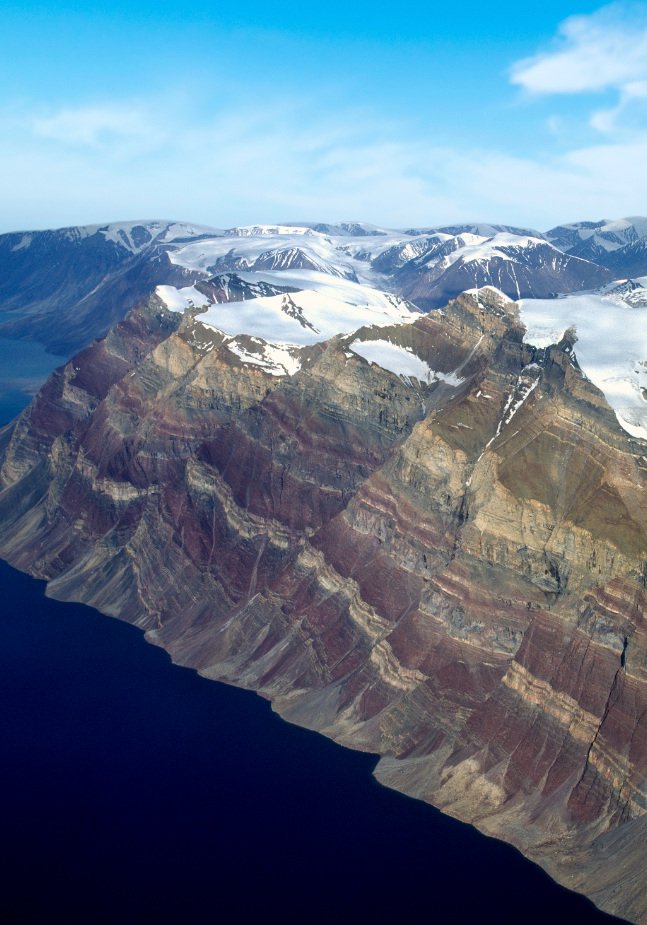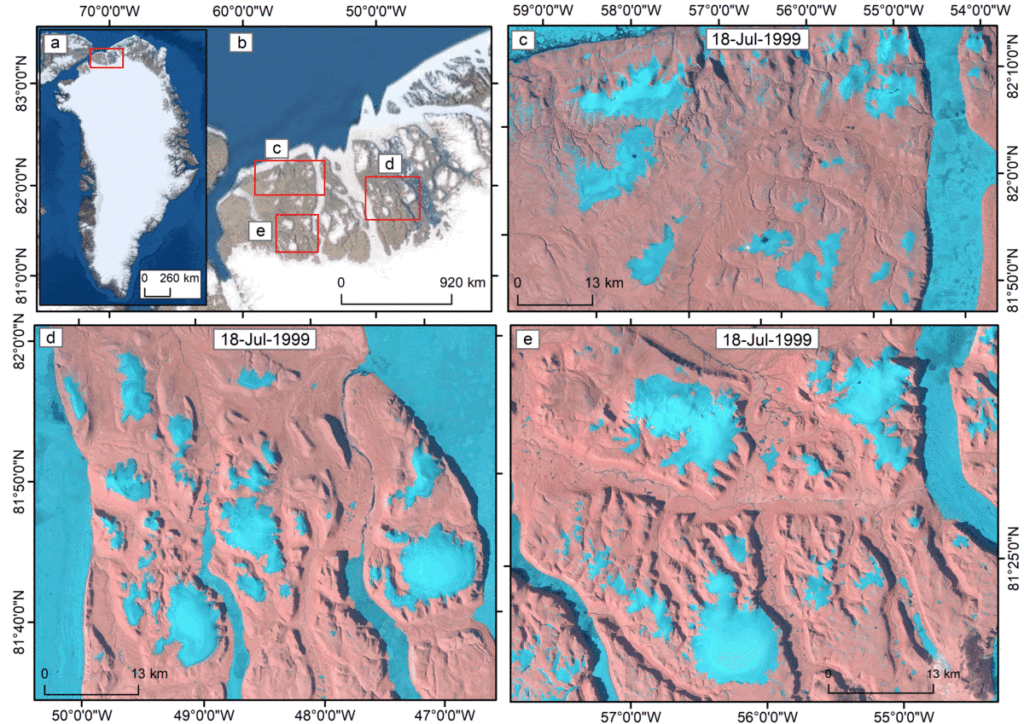
Peripheral glaciers, like these ice caps topping mountains in East Greenland, face rapidly accelerated rates of warming, according to a new study in AGU's Geophysical Research Letters. Credit: Jakob Lautrup/GEUS
Greenland's many small glaciers are melting more rapidly as the Arctic warms, contributing to sea level rise, yet they are less well-studied than the main Greenland Ice Sheet. A new study documents about a 50% increase in melting in these small but important glaciers over the past two decades.
The new study, published today in the AGU journal Geophysical Research Letters, focused on "peripheral" glaciers, which are glaciers with areas smaller than 0.05 km2 and do not receive ice flow or accumulation from the Greenland Ice Sheet.
There are around 20,300 peripheral glaciers in Greenland, and while they make up only about four percent of Greenland's ice-covered areas, they contribute as much as 11 percent of the total loss of ice from Greenland's ice-covered areas. This outsize melt rate means an outsize contribution to sea level rise.
Melting of peripheral glaciers has increased by more than 50% over the past two decades, as recorded by altimetry data from ICESat and ICESat-2, the study found. On average, 42.3 gigatons of ice melted per year from October 2018 to December 2021. In comparison, 27.2 gigatons melted annually from February 2003 to October 2009.
Peripheral glaciers now lose four times as much mass annually as in 2003, the new study shows.
"The loss of ice from these small glaciers occurs because they are more sensitive to ongoing temperature changes and therefore melt faster than we see in many other places in the Arctic," said Shfaqat Abbas Khan, lead author of the study and a professor at the National Space Institute at the Technical University of Denmark. "We can see that there is a marked increase in the melting of the glaciers in northern Greenland. This shows that the ice masses in Greenland are very unstable and that they make a considerable contribution to the global sea level rise."
"I think it's really valuable to shine a light on the existence of these glaciers and how they are changing," said Twila Moon, a glaciologist at the University of Colorado Boulder who was not involved in the study. "Many people want to know much sea level is going to change at a specific location and when that will happen. To answer those questions, we need a very detailed understanding of where we're losing ice at different times," including both large ice sheets and smaller glaciers.

Northern Greenland's isolated glaciers visibly diminish between July 1999 and July 2919, as captured by satellite. Credit: Khan et al. 2022/Geophysical Research Letters
Uneven melting across Greenland
Global warming is causing significant melting overall in Greenland's ice sheet and glaciers, but the location and rate of melt is uneven. That makes quantifying ice loss on even small glaciers critical to understand how much fresh water is flowing off the island.
"Many studies have documented the state of the Greenland Ice Sheet over the past decade. But even though the loss of ice from peripheral glaciers is such a large part of Greenland's total ice loss, there are very few studies documenting the health of these peripheral glaciers," said study co-author William Colgan, a glaciologist at the National Geological Survey of Denmark and Greenland.
Low ice loss rates, such as are found in the high mountains in East Greenland that receive heavy snowfall, are offset by the intense melting of the peripheral glaciers in North Greenland. Although the isolated glaciers are not part of the Greenland Ice Sheet, which most Greenland-driven sea level rise research focuses on, it is important to include them in the total melt budget from the Arctic to calculate exactly how much the region contributes to sea level rise.






